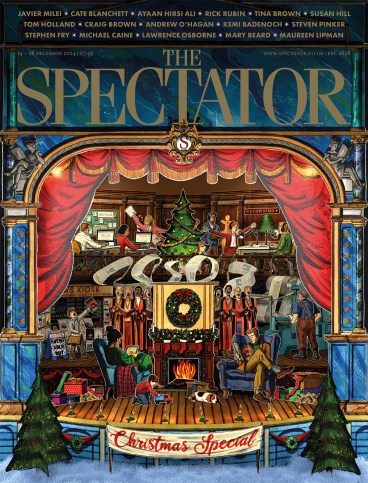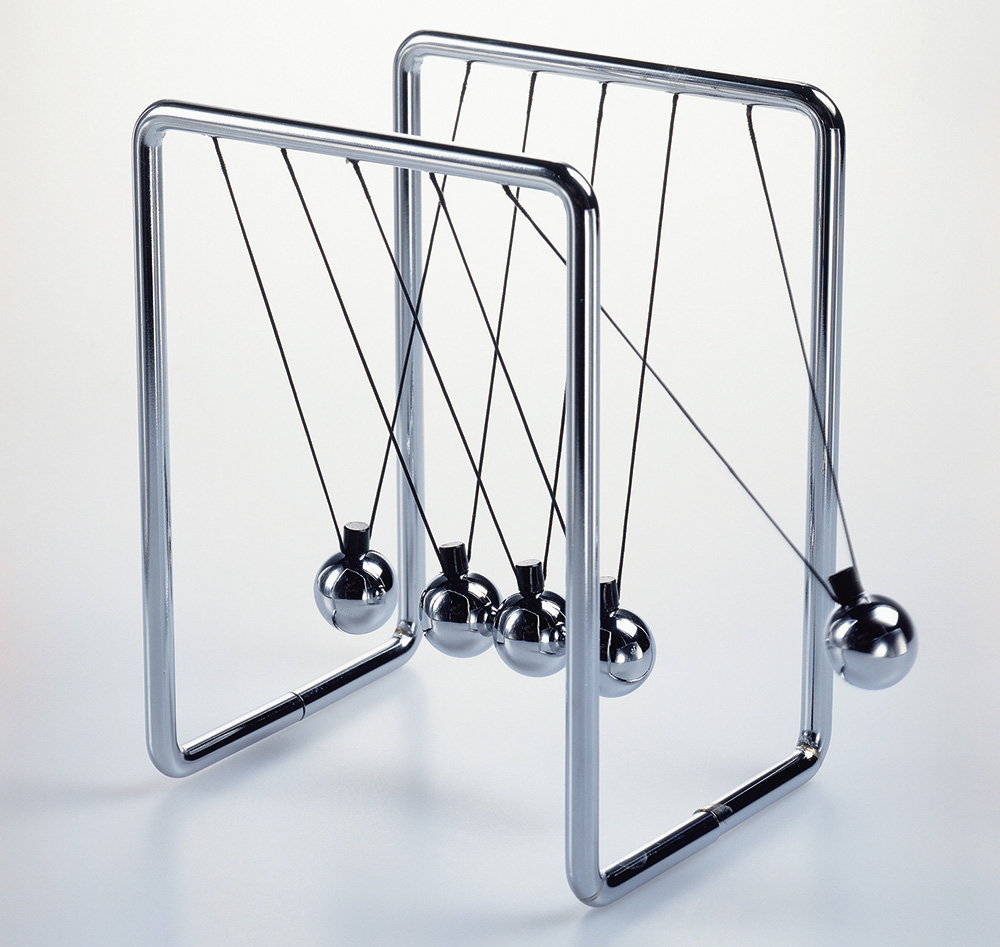
Many reviewers start work with a peek at the book’s index. Here you find Gladys Goose Lamp, Choo Choo Chain and Dynamite Candles – novelty gifts (the ‘executive toys’ of the title) that made a small fortune for their creators. You might therefore think this a very slight book – so slight that its value could be dispersed by the mildest of zephyrs. But no. With unhesitating commitment it reveals the frailty and vanity of the long-gone culture it describes. Thus, fascinating.
Can anything better illustrate the sense of doom gathering in the 1980s than an executive toy created for bored Concorde passengers? They say an era is at its end when its illusions are exhausted: BA001 LHR-JFK, playing with a fluid puzzle after several glasses of the Chateau Palmer ’70 at Mach 2. The memory fades…
Chromed classic Coca-Cola contour bottles found their way into the flat of William S. Burroughs
Richard Loncraine, born in 1946, is a soixante-huitard of a peculiarly English cast. He was no chucker of bricks at coppers, and his revolution was in matters of bizarre innovation. His was the era when the Mr Freedom shop sold an armchair looking like chomping dentures; a time when his friend and collaborator Peter Broxton said: ‘There were poets, pop stars and mini-skirts everywhere.’
Loncraine was – and remains – an obsessive doer, one of those people who can make unlikely things happen when elsewhere is inertia. As a schoolboy, he fashioned a hands-free telephone speaker from an army surplus Lancaster bombardier’s control panel. Creative scavenging was a major part of his repertoire: old pubs and the Portobello Road furnished him with his artist’s materials.
After the Royal College of Art, in 1969 Loncraine became a producer-director of the BBC’s Tomorrow’s World (presented by Raymond Baxter with a fruity voice) which broadcast superior intel about technology and science. It was a deservedly popular success. Loncraine later did very well with feature films which were neither contumaciously rubbished nor slavishly admired by the critics. Over time, these funded his heroic and obsessive tinkering.
The Loncraine world view was announced to the public at Harrods’s Way In department, described as ‘trendy’. Here, in 1967, an early Loncraine business called Clever Designs showed a toy called Ballrace. This was Newton’s Cradle, sometimes nicely known as Newton’s Balls. It is a desktop demonstration of the third law of motion, perhaps the only demonstration of such a thing available in Harrods. Five adjacent metal balls are suspended by string from a frame. One end ball is raised and then released to strike the others. The three intermediate balls do not move, but the ball at the opposite end arches dramatically into space, demonstrating the conservation of energy and the existence of pressure waves. Greatly, one imagines, to the relief of the frazzled executive.
Newton adapted the idea from the French physicist Edme Mariotte. And Loncraine gave it the Bauhaus chrome treatment. The multilingual packaging was in the fashionable Helvetica sans serif font. Two years later, the year Loncraine joined the BBC, a formal business partnership with Peter Broxton began. It was at the intersection of art school experimentation, surrealism, pop and design; but then it degenerated into gifts, and Loncraine Broxton’s spirit familiars ceased to be curators and instead became gift-store buyers. The same decline occurred in the shop at New York’s Museum of Modern Art. Fifty years ago it was selling Bauhaus replicas. Now it sells trinkets.
Yet there are comparisons to be made with radical French thought. Jacques Carelman was to the visual arts what Oulipo was to literature. In his Catalogue des Objets Introuvables of 1969 he shows a ‘Coffee Pot for Masochists’, with the spout facing the wrong way – which could have been by Loncraine. He also shows a diving-mask with a windscreen wiper; and he turned Raymond Queneau’s Zazie dans le Métro into a cartoon. That sort of stuff was dans le vent.
This book of apparent trivia deserves serious analysis. The text is a transcript of amused banter between Loncraine and Broxton. It would have benefitted from robust critical analysis and commentary, as the period references are astonishing. In 1965, Loncraine exhibited a kinetic device at the ICA which bore comparison to Moholy-Nagy’s Light Space Modulator, although he is too self-deprecating to make such a lofty comparison. In this we can see British amateurism and the fear of being taken too seriously. In 1971, one of his kinetics was an important motif in John Schlesinger’s Sunday Bloody Sunday, a film in which Loncraine played a bit part. There were connections to the Fluxus movement and to the Indica Gallery in Mason’s Yard, where John met Yoko. Early sales were handled by the people who made a thing of Peter Blake’s ‘Babe Rainbow’, once on every ambitiously arty student’s wall. Certainly on mine.
Loncraine Broxton chromed some classic Coca-Cola contour bottles. These found their way into both Mr Chow’s celebrity Knightsbridge restaurant and into the flat of William S. Burroughs. Now there’s a potential PhD thesis for someone.
Never mind the French intellos, Loncraine is also in the native tradition of the 16th-century naturalist John Tradescant and other inspired eccentric collectors. In his ‘Ark’, Tradescant displayed a mermaid’s hand, Charles V’s personal whip and a fragment of the True Cross (all in south Lambeth). This richly eclectic collection formed the basis of the Ashmolean Museum.
What appears to be a deluge of trivia turns out to be an uncharted ocean of reference and meaning. And this peculiar book is itself a reminder of Newton’s third law of motion: if we react against the silliness of executive toys, we take reciprocal delight in the creator’s infectious ludic sensibility.
Of course no one needs indoor boules, a ball-point pen shaped like a red mullet, quilted book jackets or a magnetic pyramid for aggregating loose paperclips. John Ruskin thought a man could count himself rich by the things he could do without. Here’s your aide-memoire to that sort of redundancy. It is absurd and completely enchanting.








Comments